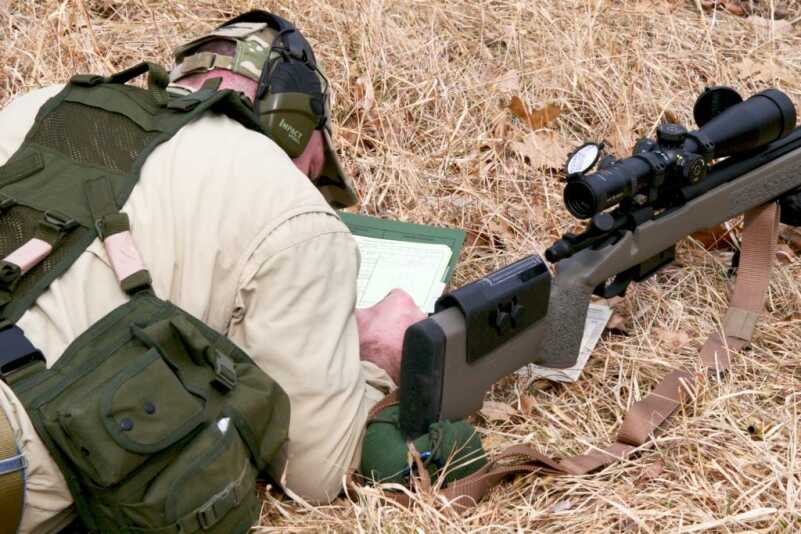
When you shoot log your information because you’re not going to be able to recall everything perfectly every time.
There is no worse sound to hear while you’re shooting a stage then to hear the dreaded “no data” call from the spotter or to hear nothing at all. It means no one has any idea where that shot went and they can’t give you a correction for the follow up shot. No Bueno. There are going to be times when you have shots like that but how do we mitigate them? Well, that requires an investment of time and ammunition in order to learn how your rifle is going to respond in different environmental conditions. It will also require some technology that can greatly shorten the learning curve, which can be beneficial to those shooters that are just starting out.
Before you start developing the necessary ballistic data for the rifle and then utilizing it for hunting or at a match there are some tools that will make things easier. For decades, a rifle data book has been an essential tool for developing and referencing ballistic data for a particular rifle. Not much has changed really, data books can still be an essential tool, although they have evolved over the years. The traditional spiral bound databooks are becoming nearly ancient technology, kind of like the fax machine or pay phones, sure they work but there are better options now. Modular databooks are much more preferential because they can be easily tailored to the shooter’s needs by adding and removing pages. A weather meter is another tool that borders on essential when you are starting to collect data because it will allow you to record the environmental conditions in real time.
Ideally, a weather meter that can provide information about the temperature, humidity, barometric pressure, density altitude, and wind speed is preferential. However, these units are sometimes quite expensive so even if you pick up a cheaper unit that can only give you temperature and wind speed that will be better than nothing. Finally, a chronograph is useful for obtaining an accurate muzzle velocity for the rifle and ammunition. You want the most refined muzzle velocity numbers that you can get since this will make your ballistic data more accurate when it comes time to true it up. It’s not absolutely necessary to have one as there are other methods that you can use to set up your initial ballistic data.
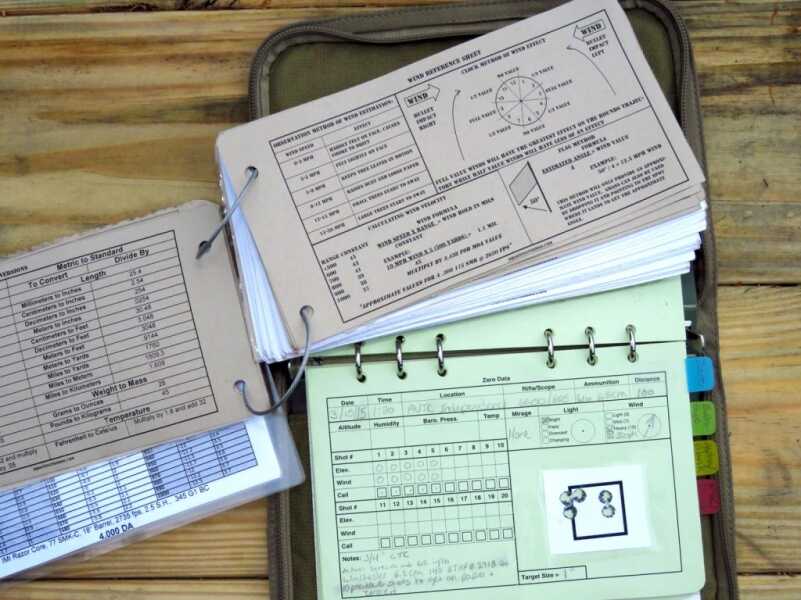
Starting out in precision rifle shooting you have to have a data book to log your shots. Preference should be given to modular data books that can tailored to the shooter.
Developing and eventually truing your ballistic data is going to start at the zero range. Getting a solid zero for the rifle is essential. I prefer a 100 yard zero for my precision rifles because at that short of a range the environment is going to have a negligible effect on the bullet. When you zero at 100 yards you want the bullets to be impacting essentially point-of-aim, point-of-impact within a 1″ square or circle. If you don’t have a solid zero and the bullets are impacting high or low of center then that’s going to skew your ballistic data as you go farther out. If you have a chronograph, the zero range is also where you’ll want to get your average muzzle velocity for at least five shots, preferably ten to get a more refined number. If you don’t have a chronograph, that’s ok, you can use the muzzle velocity information from the box of ammunition or from an online source to get you started. You do have to have some kind of number to use though when you start plugging the information into a ballistic computer.
Our next step is to generate a ballistic table that we can use when we head out to a known distance range to start trying to connect with our long range targets. No matter what ballistic computer you use there is going to be some common information required so that it provides the most accurate information possible. First and foremost you need to know what bullet you are shooting, the caliber, bullet type, weight, and its ballistic coefficient (BC). You might be wondering what ballistic coefficient is and in lamens terms, it’s the bullet’s ability to retain its speed and energy over a distance. BC represents how efficient a bullet flies through the air. A higher BC bullet means that it will require less drop and be less affected by the wind than a lower BC bullet of the same caliber. The BC value is expressed as a decimal number between 0.0 and 1.00, 1.00 being the quintessential “perfect” bullet. You’ll also have to know the scope’s height over bore measured from the center of bore to the center of the scope tube.

It’s going to be important to know the ballistic coefficient for your bullet in case you have to manipulate it later on.
Finally, you’ll need to input some environmental data, which can be taken from a weather meter or the weather forecast, at this point it doesn’t have to be exact. I do like to have my data set up for density altitude, the combination of the temperature, physical elevation, barometric pressure, and humidity into one value. This helps makes data collection and tracking more efficient since you’ll be only dealing with one value that influences the data instead of four. In terms of ballistic calculators, some allow you to directly input the density altitude value that you want the table to represent, while some others are a little more involved. Probably the easiest way is to use a density altitude calculator to figure out what combination of environmental factors equal the desired density altitude. Plug those numbers into the ballistic calculator and voila your data will be for that density altitude.
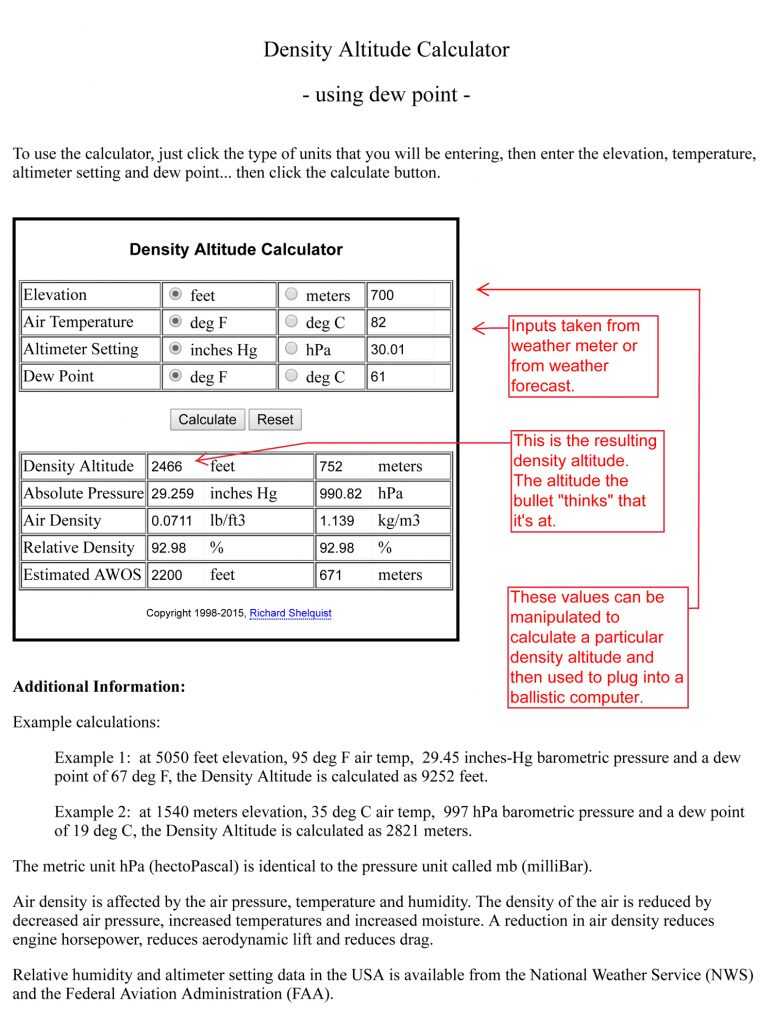
This density altitude calculator is at wahiduddin.net and allows you to figure out what the density altitude equivalent is to the standard weather inputs.
Just having the ballistic printout simply isn’t good enough, not if you want to be able to increase your chances for a first round hit. We’ll have to take that data back to the range to verify its accuracy, this is the beginning process of trueing our data. When you true your ballistic data it helps to try to do this beyond 600 yards on a target that is as small as you’re comfortable with. Closer than that and you’ll find that you can actually have some pretty significant differences in muzzle velocity and still use the same elevation setting to hit the target. Pushing it out beyond 600 yards though will widen the gap and velocity differences will begin to manifest themselves. Using as small a target as possible will also ensure that you’re getting accurate feedback on which elevation setting is the correct one. Truing up our ballistic data is simple, we’re just making sure that what is on paper is what we need to hit a target and if it’s not, then we pencil in what the correct elevation setting is. This is where the databook comes in handy.
Technology has made it very easy to calculate an accurate ballistic chart and little is needed to true it up to reality. The databook helps you record some of that information as you true up your ballistic chart so you can reference it later. I also don’t think it’s as necessary as it may have been in the past to be so religious in documenting every target engaged in the databook. When you do use it though you want to make sure that you’re filling out the pages correctly so that the information will make sense at a later date. Across the top of every databook page are boxes for the location, date, what rifle, and scope is being used. For the most part you can fill these boxes out before you fire a shot because the information is going to be the same regardless of distance.
Outside of that, there are boxes for the environmental factors, although I only fill in one box with the density altitude, the range to the target, as well as for light, and wind conditions. I don’t pay much attention to the light conditions, I may note if it’s bright or overcast but in my experience, this doesn’t have any effect when shooting through a magnified optic. As you fill out the target section with called hits and your elevation settings you have to be super accurate here. This is also where shooting at as small a target as possible is going to help. If you’re shooting at an IPSC steel target that’s 30″ tall, you have a large window where you can get a hit with an improper setting. Engaging a smaller target, say a 12″ plate, is going to require the elevation settings to be more refined in order to get a good hit. As you are shooting and logging your shots you’re looking for trends in the data, parts where the impacts don’t completely match the trajectory calculated on the ballistic chart. If you’re starting to notice that all of the shots are starting to hit low the farther you go out, that’s a trend. Note that difference in your log book, make the correction needed to get a hit, and log what the new elevation setting is. Now, we’re starting to true our data.
Again, thanks to modern technology we can generally get pretty accurate, trued ballistic data after one or two trips to the range. After our trip to the range where we logged some differences between the calculated chart and reality, we need to revisit the ballistic computer. With the information in our data book in hand, we now have to get the calculator to match reality and we do this through manipulation. The most common way you’re going to manipulate the ballistic calculator to true up the data is through the muzzle velocity. You need to change the muzzle velocity in increments until what you saw at the range is shown on the screen. Sometimes though, to get the information really refined you may also have to manipulate the ballistic coefficient also, which I had to do when I was truing up data for my precision AR-15. At this point, once we’ve gotten the ballistic computer to match what we experienced on the range our data is trued up.

Chances are you’re going to have to true your data up in the ballistic calculator. Start with the muzzle velocity first and if you have to modify the ballistic coefficient.
Most data books will have a zero summary chart near the front that serves this purpose, allowing the shooter to access vital data quickly. It’s not practical to start flipping through our data books in the course of a match looking for a familiar condition so we can use the information on that page. After you have trued up your data you can fill out the zero summary page for the different distances that are listed on it, usually, they’re every 25 yards. This can also serve as a good back up to any electronic or other data cards that you may also have created. During a stage, you’ll need a way to access only the pertinent information within your line of site and this is where some of the data cardholders can come in handy. There are quite a few variations but the most popular seem to be the wrist coach type that can accept index cards or ones that can attach to the rifle itself. Both methods keep the data close at hand so that all you have to do is shift focus from the optic to the card and back again to start engaging the next target.
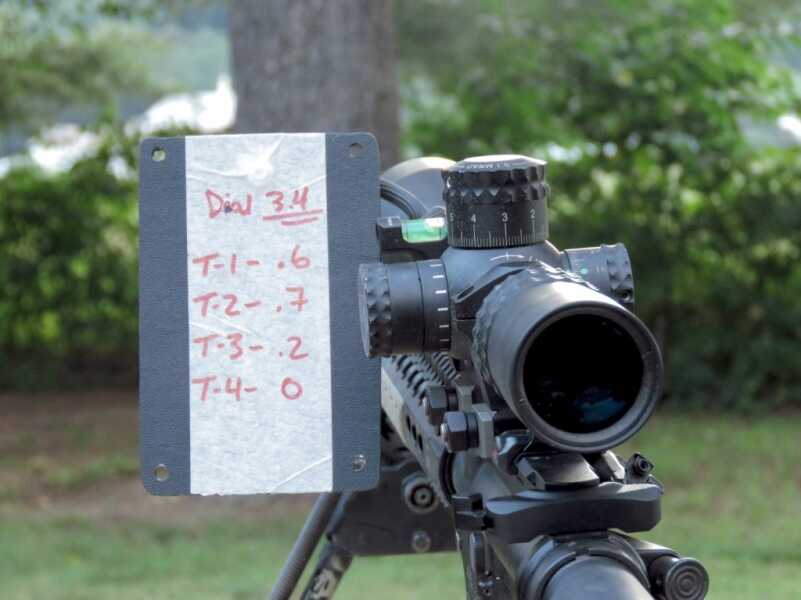
A dope holder like this one keeps the information you need within your line of sight for easy referencing.
As briefly as I can describe that’s how you are going to gather, true, and utilize your ballistic data for precision rifle shooting. Some technologies make the process a lot more simple, such a Kestrel weather meter with ballistic software. The software allows you to easily true your data by simply telling it what you needed to get a hit at a certain range and it does the rest. The subject of ballistics can extend much farther of course and my goal was to try to give a new shooter the building blocks needed to get their own data. To this end, I chose not to go in depth on certain subjects such as the different ballistic coefficients that are used or how variations in muzzle velocity can occur due to temperature. The methods that I discussed above can also apply to just about any caliber or rifle, whether that be for a rimfire rifle or hunting rifle, it’s all the same.

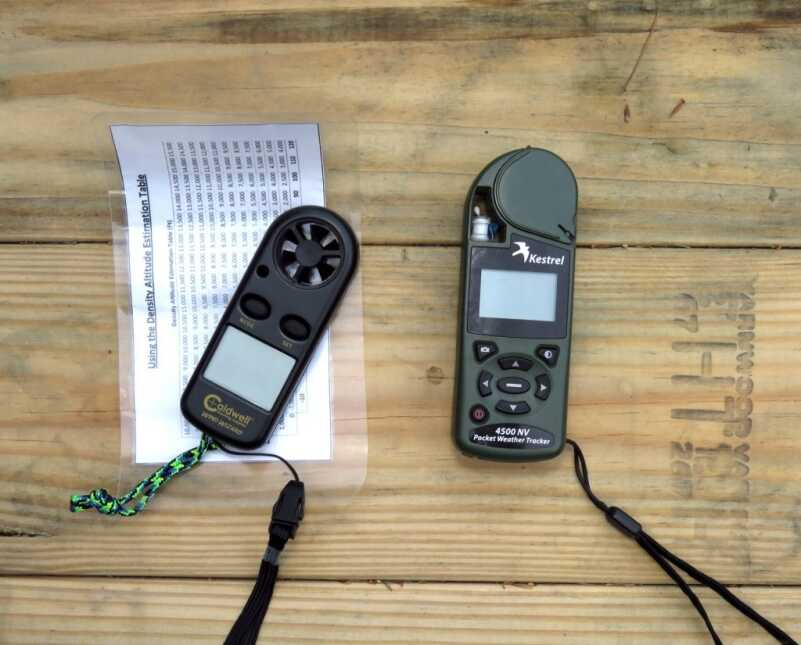
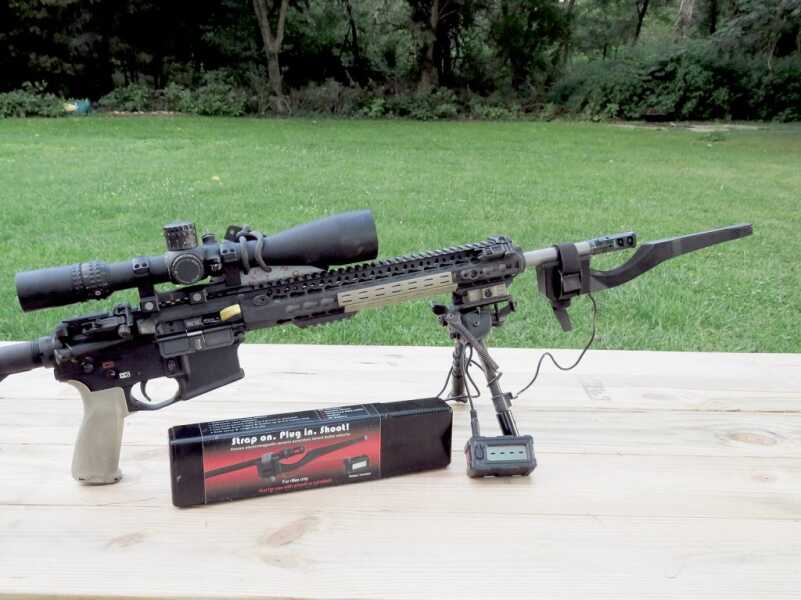
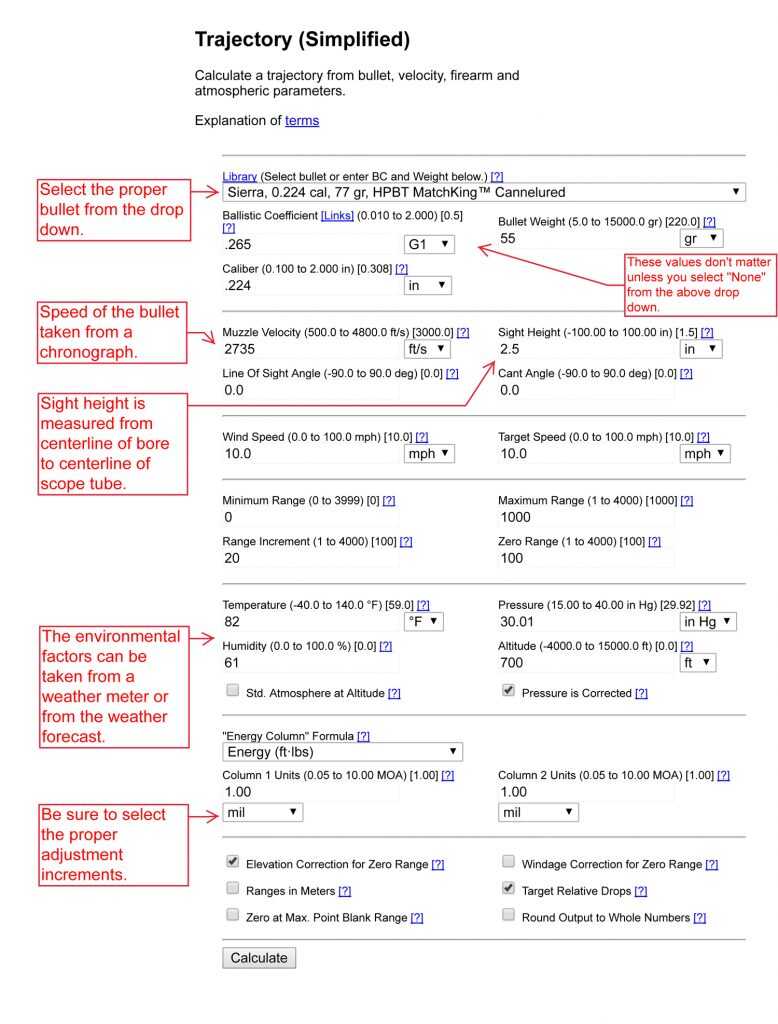
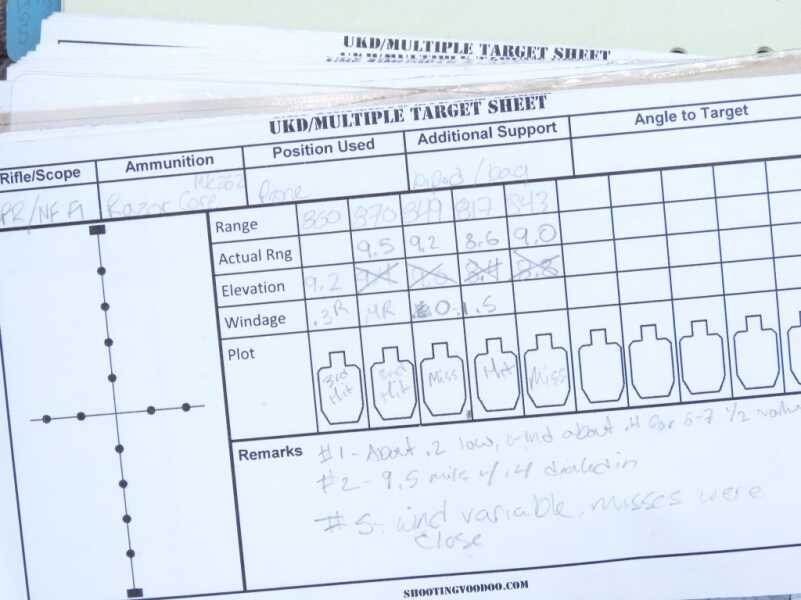
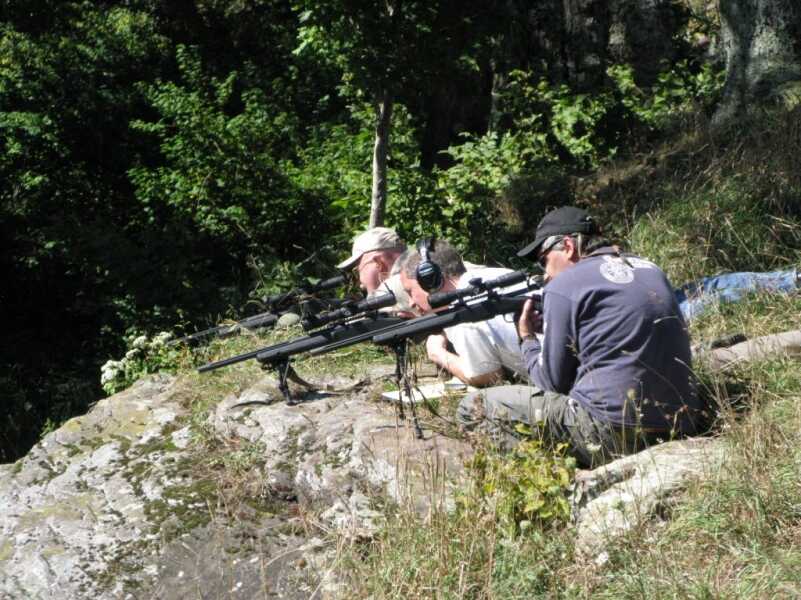
Great article. I wished I had read this a few years ago.
Thanks Ian, saved, good data to store for reference when I have a brain fart…… Thanks again for all the effort, passing on to sons starting F-Class.